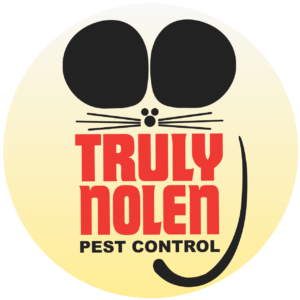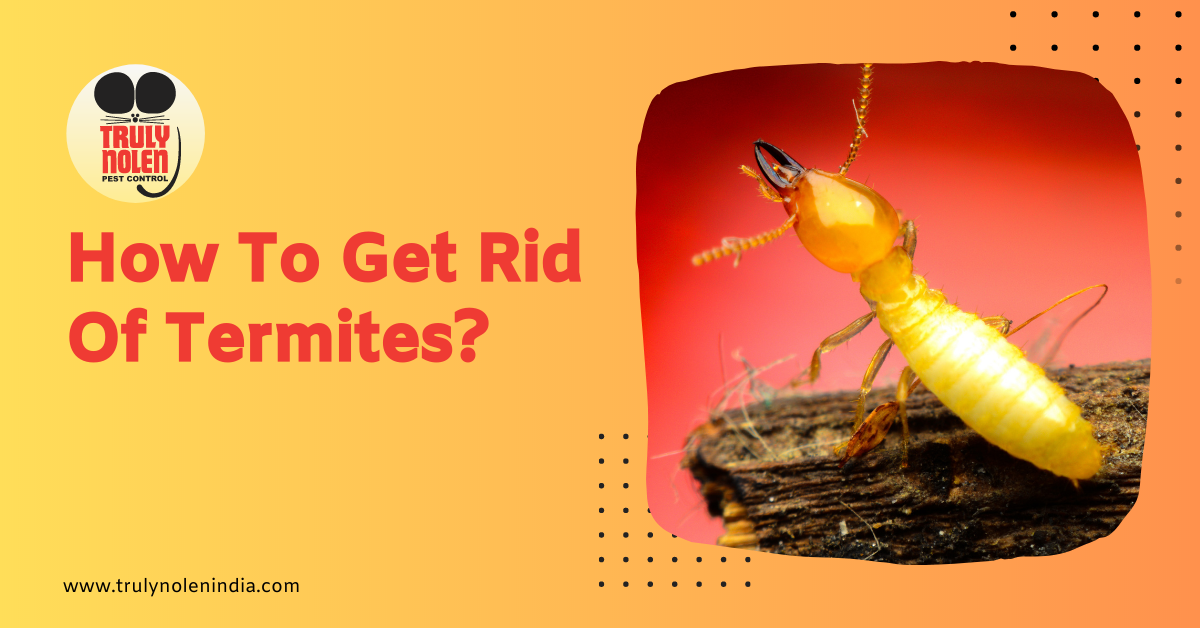Have you noticed strange mud tubes and damage on your wooden furniture or walls? Don’t blame your furry friends just yet. It might be termites! These pesky insects may be small, but they can cause considerable damage.
According to todayshomeowners.com Termites cost homeowners $5 billion each year in repair costs and prevention efforts and around $40 billion in damage to agricultural resources and lumber each year.
In this blog, we’ll learn about how to identify termite infestations, the causes of termite infestations, and how to get rid of termites. Let’s get started and say goodbye to termites for good.
All About Termites
Termites have the power to bring down entire buildings! Yes, you read that right. Termites are notorious for feasting on wood and other cellulose materials, which can cause significant damage to homes and buildings.
Now, you might be wondering why we are making such a big deal about it. “They’re just like ants, right?”
Wrong!
While termites may look similar to ants, they have distinct physical features such as straight antennae, a broad waist, and uniform wings. These features help them break down cellulose, making them a significant threat to any wooden structure they come across.
But don’t worry, there are ways to deal with these pesky insects. It’s essential to be able to identify them and their behaviour to effectively control and prevent termite infestations. So, let’s dive deeper into the world of termites and discover what makes them such a significant threat to our homes and buildings and how to get rid of termites permanently.
Termite Behaviour
We can know more about termites through the following points:
Colonies: Termites live in large colonies numbering in thousands and even millions.
Organized Structure: Termites have a defined structure in their colonies. They are social insects and have a king, queen and various castes. Each caste has a distinct function.
Communication: They communicate with each other through chemical signals, which helps them coordinate tasks such as foraging for food and defending the colony.
Swarming: Termite swarmers, or winged reproductives, emerge from the colony to mate and start new colonies, usually in the spring or early summer.
Attracted To Cellulose-Based Materials: Termites are attracted to cellulose materials, such as wood, paper, and plant material. They tunnel through wood, creating long, narrow galleries as they feed.
What Are The Types Of Termites?
There are about 2,750 species of termites of which 220 species are found in India. However, all the species are not considered as serious pests.
Termites are often categorized into three main types: subterranean, drywood, and dampwood termites. Each type of termite has distinct characteristics and behaviour, making it essential to understand the differences between them to identify and prevent infestations more effectively.
Subterranean termites: They live in underground colonies and create mud tubes to access their food sources. These termites can cause significant damage to structures.
Drywood termites: These live in dry wood and do not require contact with soil. They can be difficult to spot, as they do not create mud tubes and can infest wooden structures for years without being noticed.
Dampwood termites: These live in moist wood and are often found in coastal regions. These termites require higher moisture levels than other termite species, and infestations typically occur in outdoor structures such as decks and fences.
Harmful Impacts Of Termite Infestations

Termite infestations pose a significant threat as one of the most severe pest problems in the present day. Here are the harmful effects of termite infestations
Structural Damage: Termites feed on cellulose-based materials, such as wood, paper, and cardboard, which are common building materials. Over time, termite damage can weaken foundations, walls, and roofs, compromising the structural integrity of buildings. This can lead to costly repairs and even safety hazards.
Health Risks: Termite droppings and shed wings can trigger allergic reactions in some people, causing symptoms such as sneezing, coughing, and skin irritation. Termite infestations can also increase humidity levels, which can promote mold growth and potentially worsen respiratory issues.
Financial Loss: The cost of repairing termite damage can be significant, especially if the infestation is left untreated for a long period of time. In severe cases, buildings may need to be demolished and rebuilt, leading to even greater financial loss.
Affect on Property Value: Termite infestations can significantly reduce the value of a property, making it more difficult to sell or rent.
What Are The Signs Of Termite Infestation?
Termites are notorious for causing extensive damage to structures, and it’s crucial to identify an infestation early to prevent costly repairs. Here are some common signs of termite infestation to look out for:
Visible Mud Tubes: Subterranean termites create mud tubes to travel from their colony to their food source. These tubes are typically found along the foundation of a building, and their presence can indicate an active infestation.
Discarded Wings: Termites swarm during certain times of the year, and after mating, they shed their wings. Piles of discarded wings may indicate a termite colony nearby.
Hollow Wood: Termites tunnel through wood, weakening its structure and causing it to become hollow. If you tap on a wooden structure and hear a hollow sound, it could be a sign of termite damage.
Cracked or Bubbling Paint: Termites produce moisture when tunneling through wood, which can cause paint to bubble or crack.
Frass: Drywood termites create tiny, pellet-like droppings called frass that they push out of their tunnels. If you find small piles of frass near wooden structures, it could be a sign of an infestation.
Swarming Termites: If you notice a swarm of winged insects around your property, it could be a sign of a termite infestation.
It’s important to note that termite infestations can be difficult to detect, and some signs may not be obvious. Regular inspections by a professional termite control company can help identify an infestation early and prevent extensive damage.
Causes Of Termite Infestations:
Termite infestation can be attributed to several factors, including:
Moisture: Termites require moisture to survive, and damp conditions can attract them to your property. Leaky pipes, standing water, and poor drainage can all create moist environments that are conducive to termite activity.
Wood-to-Soil Contact: Subterranean termites live in underground colonies and create mud tubes to access their food source. When wooden structures are in direct contact with soil, it provides an easy entry point for termites.
Woodpiles and Debris: Woodpiles, tree stumps, and other debris around your property can attract termites. These items provide a source of food and shelter for termites, making them more likely to infest nearby structures.
Structural Issues: Cracks and gaps in foundations, walls, and roofs can allow termites to enter buildings. Termites can also enter through utility lines and plumbing, so it’s essential to seal any openings around these areas.
Location: Location: Certain regions are more prone to termite infestations than others. For example, areas with warm, humid climates and high rainfall are ideal environments for termites.
How To Get Rid Of Termites?

Termites can cause significant damage to homes and buildings, making it crucial to eliminate them as soon as possible. Getting rid of termites permanently involves a combination of identifying the type of termites, using effective treatments, and taking preventative measures to ensure they don’t return. Here are some detailed steps to help you get rid of termites permanently:
Identify the Type of Termites: Termites can be broadly classified into three types: dry wood, wet wood and underground. Each type of termite has unique characteristics and requires different treatment methods. Therefore, it’s crucial to identify the type of termites infesting your property before deciding on a treatment plan.
Use Chemical Treatments: Chemical treatments are the most widely used and effective methods for eliminating termites. These treatments involve the use of chemical solutions to kill the termites or deter them from returning. While chemical treatments can be very effective, it’s important to take necessary precautions and follow the instructions carefully to ensure the safety of yourself and your family.
Heat Treatment: Heat treatment is an eco-friendly and chemical-free way to kill termites. This treatment involves heating the infested area to a temperature that is lethal to termites. Heat treatments are typically conducted by professionals and can be expensive, but they are an effective option for drywood and subterranean termites.
Natural Remedies: Several natural remedies can help control termite populations, but they are not as effective as chemical treatments. Here are some natural remedies that you can try:
- Orange oil:
It contains d-limonene, which is toxic to termites. It is effective against drywood termites but may not work against subterranean termites.
- Vinegar:
It is a natural disinfectant that can help deter termites. Mix equal parts of vinegar and water and spray the solution on wooden surfaces.
- Borax:
It is a natural mineral that can be used to kill termites. Mix borax with water to make a paste and apply it to wooden surfaces.
- Diatomaceous earth:
It is a natural powder made from the fossilized diatoms and can be applied on wooden surfaces to eliminate termites.
Preventative Measures: Preventing future termite infestations is key to ensuring they don’t return. Here are some preventative measures that you can take:
- Regular inspections:
Schedule regular termite inspections to catch infestations early.
- Remove woodpiles and debris:
Remove any woodpiles, tree stumps, or debris from your property, as they can attract termites.
- Treat wooden structures:
Treat wooden structures with insecticides to prevent termites from infesting them.
- Improve ventilation:
Ensure that your home is properly ventilated to prevent moisture buildup, which can attract termites.
- Soil Treatment:
A chemical barrier created through soil treatment is an effective preventive measure against future termite infestations.
In conclusion, getting rid of termites requires a combination of identifying the type of termites, using effective treatments, and taking preventative measures to ensure they don’t return. If you suspect a termite infestation, contact a pest control professional like Truly Pest Solution who can assess the situation and recommend the best treatment options for your.
Get Rid Of Termites With Truly Termite Control!

Look no further than Truly Pest Solution’s Truly Termite Control plan to battle termite infestations in your homes and offices. Our innovative and comprehensive termite control program is the perfect answer to your question ‘how to get rid of termites effectively?’
Truly Termite Control (TTC) is a hassle-free and eco-friendly solution to control termites and prevent them from returning.
The benefits of Truly Termite Control are:
Layered approach: Truly Termite Control (TTC) is a comprehensive termite control plan that blankets your home or office, safeguarding it from termites in the most eco-friendly way.
Say goodbye to harsh chemicals and toxins, and hello to a safe and sustainable solution for your termite problem with Truly Termite Control.
Focus on soil and structure: TTC focuses on both the soil and the structure to eliminate termites from every possible entry point.
Customized solution: Our team of skilled professionals conduct a thorough analysis of your unique termite problems and provide a customized solution that is tailored to meet your specific requirements.
Comprehensive Treatment Areas: Treatment areas include attics, eaves, walls, windows, doors, plumbing pipes, foundations, and slabs to ensure every possible entry point is covered.
Complete protection: A combination of treatments above and below ground provides you with the most complete and thorough protection against termites.
Total Termite Protection: TTC is effective against all types of termites. Our experts leave no stone unturned when it comes to providing you with the most thorough and effective termite treatment solution.
In conclusion, termites can be a serious problem for homeowners and business owners alike. Knowing how to get rid of termites infestation is crucial to ensure the safety and longevity of your property. By identifying the type of termites, using effective treatments, and taking preventative measures, you can successfully eliminate and prevent termite infestations.
If you’re struggling with a termite problem, take action now by contacting Truly Pest Solution.


Leave a Reply